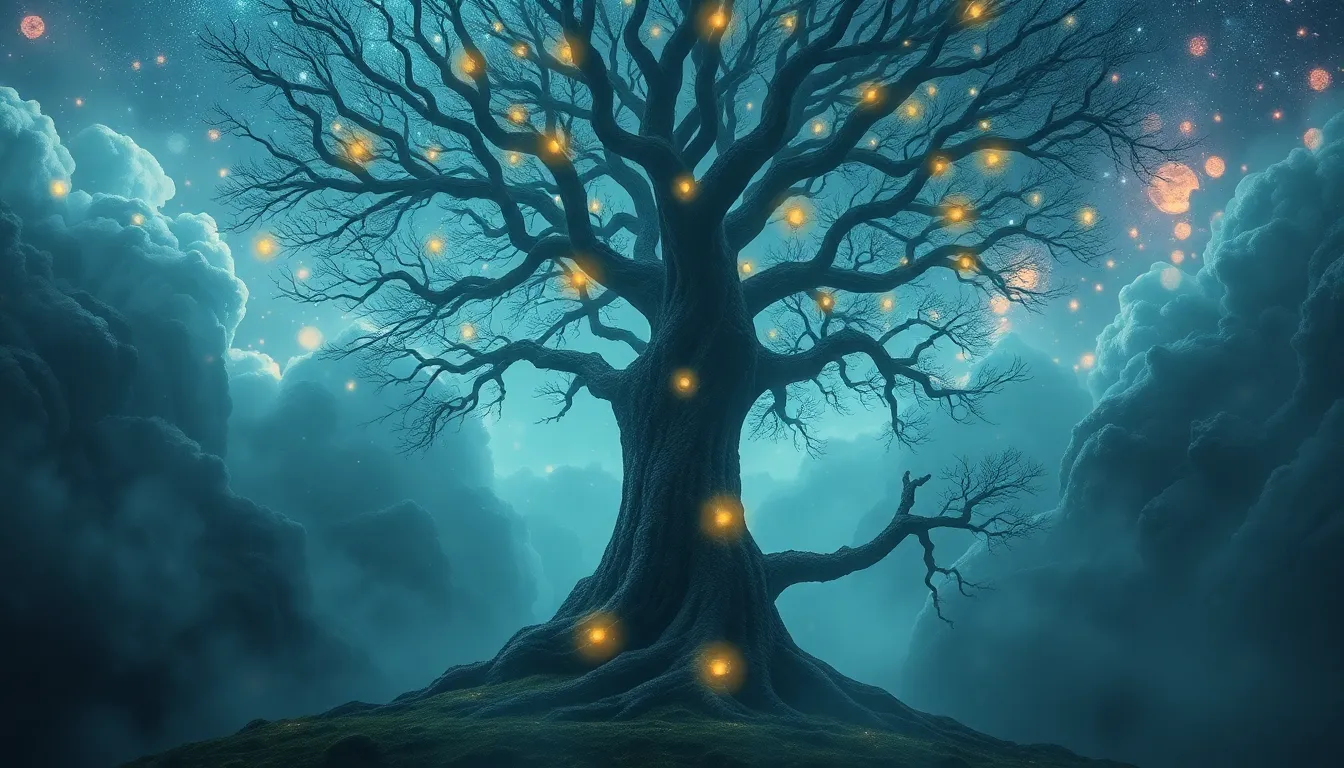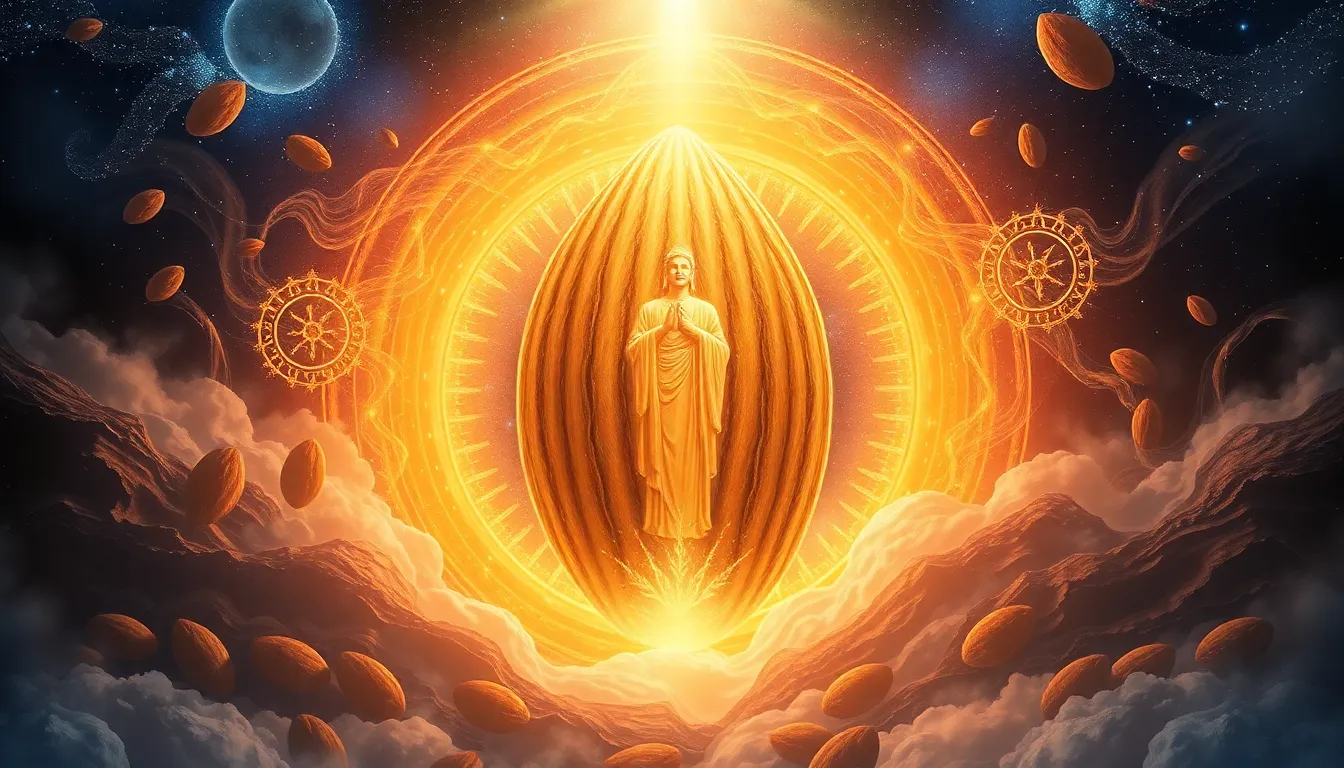The Tree of the Night: Myths of Darkness and Light
Introduction to the Tree of the Night
The Tree of the Night is a potent symbol found in various cultures, representing the intersection of darkness and light. This archetype often embodies the duality of existence, highlighting the balance of good and evil, life and death, and the cyclical nature of the universe. In mythology, trees frequently serve as metaphors for growth and transformation, reflecting humanity’s eternal struggle with the unseen forces of the night and the illuminating presence of light.
Symbolism of the Tree in World Mythology
The tree is a universal symbol, often depicted as a life-giving force. In many mythologies, trees are seen as sacred entities that connect the earth with the heavens. They symbolize fertility, growth, and nurturing, while at the same time, they can also represent the unknown and the darkness that lurks beneath the surface.
- Life-giving aspects: Trees provide shelter, food, and oxygen, vital for survival.
- Darkness and Light: Mythological trees can represent both the nurturing light of life and the shadowy depths of despair.
The Tree of Life vs. The Tree of Death
The dichotomy between the Tree of Life and the Tree of Death explores the duality of existence. These archetypes reflect the human experience, with the Tree of Life symbolizing growth, vitality, and the potential for renewal, while the Tree of Death often represents decay, endings, and the inevitability of mortality.
Examples from different cultures include:
- Yggdrasil: The Norse World Tree connects all realms and embodies the cycle of life and death.
- The Tree of Knowledge: In Judeo-Christian tradition, it represents temptation and the loss of innocence.
Myths from Ancient Civilizations
Ancient civilizations often depicted trees as central to their cosmologies and mythologies, intertwining themes of life, death, and the afterlife.
Egyptian Mythology
In Egyptian mythology, the Tree of Life is linked to the afterlife and the divine. The sycamore tree, often associated with the goddess Hathor, was believed to provide sustenance and protection for souls in the afterlife.
Mesopotamian Lore
In Mesopotamian mythology, the sacred tree of Inanna symbolizes fertility and love. This tree, often depicted as a date palm, was revered for its life-giving properties and connection to the goddess’s powers.
Norse Mythology and Yggdrasil
Yggdrasil, the cosmic tree in Norse mythology, serves as a central pillar connecting the nine worlds. It is a symbol of life, death, and rebirth, encompassing all aspects of existence.
Yggdrasil also represents the balance of light and dark, with its roots in the underworld and branches reaching into the heavens. The well of wisdom and the realm of the dead are intricately tied to this mighty tree, underscoring the importance of both light and darkness in Norse cosmology.
The Tree of the Night in Folklore and Fairy Tales
Mystical trees frequently appear in folklore and fairy tales, often embodying themes of darkness and light. These tales convey moral lessons and explore the complexities of human experience.
- The Enchanted Forest: Many stories feature trees that serve as portals to other realms, representing the unknown.
- The Magic Tree: Trees that grant wishes or bestow magical powers often symbolize hope and transformation.
These narratives teach that one must navigate through darkness to reach light, reflecting the journey of self-discovery and growth.
The Tree as a Metaphor for Human Experience
The metaphor of the tree resonates deeply with the human experience. Just as trees grow and adapt through seasons, so do individuals face challenges and transformations throughout life.
- Personal Growth: Like a tree that grows stronger with each storm, individuals can emerge from struggles more resilient.
- Struggle and Enlightenment: The journey through darkness often leads to enlightenment, mirroring the way trees reach for the light.
Modern Interpretations and Adaptations
Contemporary literature and film have adapted the concept of the Tree of the Night, infusing it with new meanings while retaining its mythological roots. Creators explore themes of duality, connection, and transformation.
- Fantasy Novels: Many authors use trees as symbols of magic and adventure, echoing ancient myths.
- Films: Cinematic representations often highlight the struggle between light and dark, using trees as powerful visual metaphors.
Cultural Significance and Rituals
Trees hold significant cultural importance across various traditions. Rituals involving trees often celebrate the cycles of life, death, and rebirth.
- Seasonal Celebrations: Many cultures celebrate seasonal changes with tree rituals, such as planting or decorating trees.
- Spiritual Practices: Trees are often seen as sacred spaces for meditation and connection to the divine.
Conclusion: The Enduring Legacy of the Tree of the Night
The exploration of myths surrounding the Tree of the Night reveals profound insights into the human experience. The interplay of darkness and light, growth and decay, is a timeless narrative that resonates across cultures and eras. These myths continue to shape our understanding of existence, reminding us of the beauty and complexity inherent in life’s journey. As we navigate our own paths, the legacy of the Tree of the Night serves as a guiding symbol of hope and resilience.



